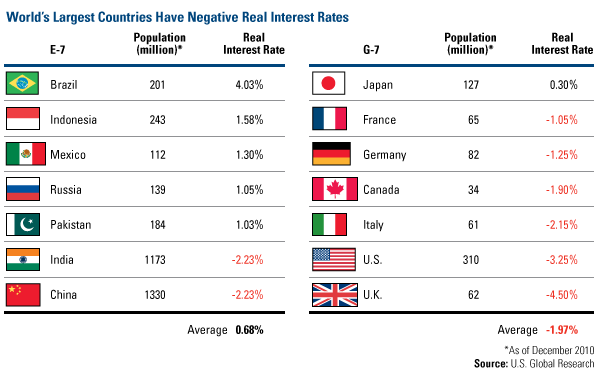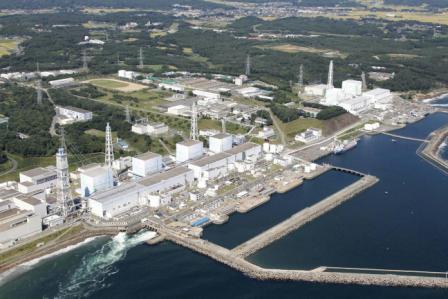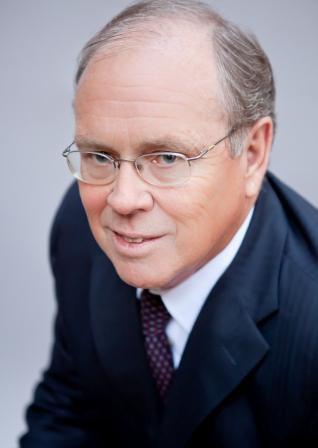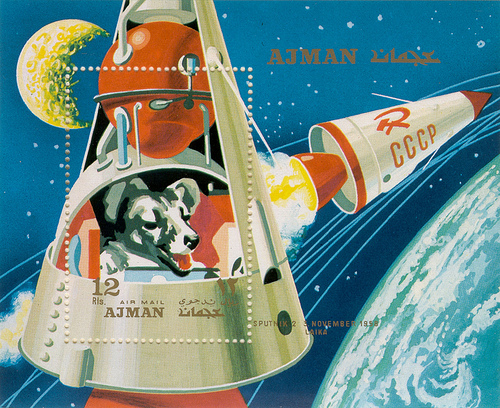
Negative real interest rates occur when the inflationary rate, or CPI, is greater than the current interest rate. A quick account of the G-7 and E-7 countries shows that the majority have negative real interest rates.
Across the developed G-7 countries, British citizens are the worst off with real interest rates in the U.K. sitting at negative 4.5 percent. U.S investors aren’t doing much better with rates at negative 3.25 percent and the Fed has all but guaranteed rates will remain there. Only Japan has a positive real interest rate among the G-7 and that rate is barely above zero.
Conversely, the most populous nations making up the E-7 have mostly positive real interest rates. However, the grouping’s grandest economic powerhouses, China and India, have negative real interest rates sitting around negative 2 percent.
Simply put, investors in those countries who have parked their savings in cash and low-yielding investments, such as Treasury bills and money market accounts in the U.S., are actually losing money due to inflation.
VTB Capital’s Andrey Kryuchenkov told The Wall Street Journal this week that, “Central banks are diversifying, and it has intensified to a rate that nobody had expected.” Latest estimates predict global central banks will purchase between 475-500 tons of gold in 2011.
This amount of capital flowing into gold has the potential to push prices up a level in 2012. John Mendelson from ISI Group sees gold prices reaching $2,200 an ounce during the first six months of 2012.
While real interest rates look to remain in the red for the foreseeable future, many of these same countries are printing record amounts of “green” with accommodative monetary policies. Bloomberg reports that global money supply (M2) is “set to increase the most on record in 2011.”
The reason global central banks have shifted the printing presses into overdrive is simple: they need the money. Frank Giustra reminded us of this new reality in an op-ed piece for the Vancouver Sun last week. Frank writes:
“The bottom line is that the money needed to bail out Europe and to fund America’s spiraling debt and future unfunded obligations is in the ten of trillions. IT DOES NOT EXIST. It has to be created by printing money in massive quantities, and despite all the rhetoric you will hear against such policies, in the end it’s the path of least resistance. Printing money is an invisible tax on savings, much easier to initiate, than, say, raising taxes or cutting back on services and entitlements.”
From the article entitled, “You Can’t Print More Gold” by Frank Holmes. Frank Holmes is chief executive officer of U.S. Global Investors – a registered investment adviser that manages approximately $2.8 billion. The information provided herein has been provided to MiningFeeds.com by the author and, as such, is subject to our disclaimer: CLICK HERE.

With tax-loss selling in full effect and the equity markets experiencing extreme volatility heading into the Christmas season, we take a look at uranium and the companies involved in the mining and exploration of yellow cake. What do you need to know about uranium?
In mid-2007 the price of Uranium reached over (US) $135.00 /lb, a high point for U3O8. The high price spurred expansion of existing mines, construction of new mines; and, the reopening of old mines as well as new prospecting.
Then the bubble burst and uranium beat a hasty retreat to the (US) $40.00 /lb mark. Earlier this year on March 11th, while the price of uranium was making a resurgence, Japan experienced the worst earthquake disaster in its modern history. The earthquake, a 9.0 on the richter scale, was followed by a deadly tsunami that resulted in near complete destruction of the infrastructure in northern parts of Japan and served a serious blow to the uranium market.
The Fukushima disaster certainly cast a shadow over the uranium mining industry and, these days, forecasting the spot price of uranium is akin to predicting the direction of the wind. But Dundee Capital Markets Vice President and Senior Mining Analyst, David Talbot, sees very strong fundamentals for uranium – particularly in the absence of substitutes for nuclear generation. His assessment suggests that uranium use will rise with growing populations and needs.
Talbot notes in a recent interview, “We forecast uranium prices of between $65 and $75 per pound over the next couple of years, especially once the HEU (highly enriched uranium) Agreement goes offline.”

In what was nothing short of a terrible year for the uranium industry, the end of 2011 will undoubtedly be marked by sighs of relief from uranium mining and exploration professionals around the world. With the sector beaten and bruised from the fall-out of the nuclear reactor crisis in Japan, is it finally time for a sector recovery?
As early as last summer, many analysts and investors were pondering that very question. David Talbot, an analysts at Dundee Capital Markets, remarked in a research note, “We are starting to hear a buzz in the sector – many investors are starting to realize that many of these stocks are trading well below their net asset values.” Some analysts, including Talbot, are of the opinion that, despite the Fukushima reactor meltdown, longer-term fundamentals haven’t changed for uranium and there will be more demand than supply in two to three years. However, two or three years is not the near-term as some point out. Mining investment advocate Peter Grandich noted on November 14th, 2011, that uranium stocks are “clearly a contrarian play“.
Heading into December, a month that may very well attract some significant tax-loss selling from off-side owners of uranium stocks, we take a look at the once high-flying mining subsector. Are uranium stocks radioactive gifts beneath the Christmas tree or are they just plain radioactive? From biggest to smallest we start with Denison Mines.
1. Denison Mines Corp. (TSX: DML – AMEX: DNN)
One of the few intermediate uranium producers, Denison mines combines production in the U.S. with a diversified development portfolio of projects in North America, Zambia and Mongolia. And for those who like strategic menerals, Denison also produces vanadium as a co-product from some of its mines in Colorado and Utah. The company’s most significant development project is the Phoenix deposit located in the Athabasca Basin in Saskatchewan.
The Athabasca Basin is a region of Northern Saskatchewan and Alberta Canada that is best known as the world’s leading source of high-grade uranium. The region currently supplies about 20% of the world’s uranium. The world’s largest high-grade uranium mine, Cameco’s McArthur River mine, is located in the Basin. The region has been in the headlines recently as Hathor Exploration (TSX: HAT), a junior exploration company with eleven uranium projects in the Basin, was the subject of a bidding war between Cameco (TSX: CCO) and Rio Tinto (LSE: RIO). Rio Tinto recently emerged as the winner paying $4.70 per share valuing the company at $654 million.
How does Denison Mines measure up? On September 30th, 2011 the company announced quarterly earnings of $0.04 per share. With a healthy balance sheet and a strong cash position which attributes 10% of the company’s market value, Denison is currently trading at (CDN) $1.46 for a market cap of $560 million which is right around the company’s net asset value and well below the price paid for Hathor Exploration.
2. Ur-Energy Inc. (TSX: URE – AMEX: URG)
Ur-Energy is a junior mining company focusing on exploration and development of uranium properties in the United States and Canada. On October 24th, 2011 Ur-Energy received the thumbs up from the Wyoming Department of Environmental Quality (WDEQ). WDEQ issued a permit to mine the company’s Lost Creek uranium project. The permit authorizes Ur-Energy to construct and operate the Lost Creek ISR uranium mine facilities, including the first mine unit. Construction on a two-million-pounds-per-year processing facility is scheduled to start in the summer of 2012. However, prior to mine development, Ur-Energy requires approval from the U.S. Bureau of Land Management (BLM) which it is has yet to receive.
Regardless, with the ink still wet on the WDEQ permit, Ur-Energy announced a strategic marketing arrangement with NuCore Energy. Under the agreement, NuCore will provide uranium marketing advisory and professional services with the intention of negotiate uranium off-take sales agreements for the future production derived from the company’s Lost Creek mine.
On September 30th, 2011 Ur-Energy reported $28.8 million in cash and short-term investments and liabilities of just over $2.7 million. The company’s shares are trading at around $1 per share valuing the company at just over $100 million. Dundee analyst David Talbot has a $3.25 price target on the company’s shares.
3. Uracan Resources Ltd. (TSX-V: URC)
Uracan Resources is one of many junior uranium stocks that appear to be down and out. Or is it? In 2007, with uranium prices hitting record highs, Uracan Resources hit highs of over $1.60. Today, in the aftermath of the Japan crisis, the company’s shares are trading at a mere $0.07 valuing the company at $10 million. With net liquid assets north of $5 million (over half the companies market cap) the market is deeply discounting Uracan’s mineral properties which, according to the company’s most recent financial statements, have seen almost $30 million of past exploration and development expenditures.
Uracan is lead by well-know Vancouver mining venture capital professional Gregg Sedun. Mr. Sedun is a former corporate finance lawyer with 28 years of mining industry-related experience and now heads Global Vision Capital. Global Vision Capital develops mining projects and raises expansion capital for those projects from its network of institutional and professional retail investors. Collectively, Gregg Sedun and Global Vision Capital have raised over $1 billion in support of mining venture development; which may provide investors with some comfort that Uracan, although down, may not be out.
MiningFeeds.com recently connected with Mr. Sedun for an exclusive interview – CLICK HERE – to read more.

Earlier this year on March 11th, while the price of uranium was making a resurgence, Japan experienced the worst earthquake disaster in its modern history. The earthquake, a 9.0 on the richter scale, was followed by a deadly tsunami that resulted in near complete destruction of the infrastructure in northern parts of Japan and served a serious blow to the uranium market.
With tax-loss selling in full effect and the equity markets experiencing extreme volatility as the end of 2011 draws near, we connected with Stewart Wallis of Crosshair Energy for an exclusive interview to find out what’s in store for the company in 2012.
Crosshair is a diversified mining and exploration company focused on uranium, vanadium and gold. After a difficult 2011 for the uranium sector, what is on the horizon in 2012 for your uranium projects?
In 2012 we will be focusing on our Wyoming uranium projects, Bootheel and Juniper Ridge. Both projects will have 43-101 resource updates released early in January, followed by scoping studies to be completed in the first quarter. Based on these reports, the 2012 programs will focus on permitting and additional drilling designed to aggressively advance these projects towards development.
Your Canadian uranium projects are located in the CMB Labrador and Crosshair spent $3.8 million on drilling in 2011 – what is the timeline for updating the company’s uranium resource estimates?
Crosshair maintains multiple and expandable uranium resources in Labrador. 2011 drill programs were conducted on both the CMB Uranium/Vanadium Project and the CMB Joint Venture Project, with a goal of increasing the uranium and vanadium resources as well as testing new targets outlined from earlier exploration programs. We anticipate updated resource estimates in 2012 on the CMB C-Zone/Armstrong corridor and the Joint Venture Two Time Zone.
How important is vanadium to the economics of the company’s CMB uranium/vanadium project?
We have not completed a scoping study on the CMB project so we cannot predict the actual cash benefit of the vanadium as a by-product. However, the vanadium mineralization occurs in the hanging wall of any open pit which might be developed on the uranium mineralization and we do know that the vanadium recoveries range from 13.4% to 93.6% based on our metallurgical test work in 2010. Typical recoveries range between 45-85%, and based on our metallurgical test reports a reasonable vanadium recovery of 85% was selected in our resource estimate.
Comparatively speaking there are quite a few uranium companies that are trading at or near 52 week lows – in your opinion, is the market effectively “throwing the baby out with the bath water” at these valuations?
Since Fukushima, all uranium companies are trading at approximately 60% of their pre Fukushima values. Once the world realizes that there are no other “green” options for base load power, the valuations of uranium explorers and developers should increase.
CXX has been trading at a discount to its peers since the Labrador Mining Moratorium was announced in April 2008. One could expect that our share price should improve when this Moratorium is removed. The INUIT government is reviewing the lifting of the Moratorium and a vote is expected to be held on or about the week of December 12th, 2011.
With Rio Tinto’s proposed acquisition of Hathor Exploration many people are wondering what’s next for the uranium sector. Is M&A something the management team is considering at this juncture?
Crosshair is constantly looking at both property and company acquisitions. Earlier this year we announced that we were looking at acquiring the US assets of AusAmerican Mining, an Australian Company. Upon completion of our due diligence and based on the current market situation we declined to proceed with the transaction. That being said we continue to evaluate other situations in the uranium sector.
Your Gold project is located in the Newfoundland and Crosshair completed a Bulk Sample in late 2010 – what is the status of this project?
The company has spent approximately $1.9 million since April 2008 on its 60% owned Golden Promise Property in central Newfoundland. This Joint Venture project with Paragon Minerals contains a NI 43-101 Inferred Resource of approximately 89,500 ounces contained in 921,000 tonnes at a grade of 3.02g/t that is open and expandable. Our 2,174 tonne Bulk Sample, done with a goal of better determining grade and recoverability rates, produced approximately $430,000 in gold and silver earlier this year.
Crosshair recently completed a name change from Crosshair Exploration to Crosshair Energy – is it safe to assume that, at some point, you intend to spin-out your gold project to focus on energy?
Crosshair is currently evaluating its strategic options for its gold assets and these options may include a sale, spin-out or option agreement.

Uracan Resources is one of many junior uranium stocks that appear to be down and out. Or is it? In 2007, with uranium prices hitting record highs, Uracan Resources hit highs of over $1.60. Today, in the aftermath of the Japan crisis, the company’s shares are trading at a mere $0.07 valuing the company at $10 million. With net liquid assets north of $5 million (over half the companies market cap) the market is deeply discounting Uracan’s mineral properties which, according to the company’s most recent financial statements, have seen almost $30 million of past exploration and development expenditures.
Uracan is lead by well-know Vancouver mining venture capital professional Gregg Sedun. Mr. Sedun is a former corporate finance lawyer with 28 years of mining industry-related experience and now heads Global Vision Capital. Global Vision Capital develops mining projects and raises expansion capital for those projects from its network of institutional and professional retail investors. Collectively, Gregg Sedun and Global Vision Capital have raised over $1 billion in support of mining venture development; which may provide investors with some comfort that Uracan, although down, may not be out.
Gregg thanks for joining us, you’ve been involved in the mining venture capital markets for some time, please tell our readers a little about yourself and why did you get involved in uranium?
By way of background, I have had a 28-year career in mining, corporate finance and venture capital, of which about half was as a mining/finance lawyer and half running a venture capital firm I founded specializing in starting or financing early stage resource opportunities. My venture capital career started as a founding director of Diamond Fields Resources, which had a huge world-class nickel discovery called “Voisey’s Bay”. Diamond Fields was sold for $4.3 Billion in 1996 which allowed me to retire from law and start my own venture capital business. I am proud to say that this business has gone very well, as I have been involved in numerous companies as a founding shareholder and/or director that have resulted in significant shareholder gains.
In 2006, I became interested in uranium, based on a strongly increasing curve of the commodity price that was moving up from $25/lb., and eventually hit $140/lb., driving up valuations of uranium companies. I became aware of a very significant package of uranium properties that were previously owned by about 50 companies in the last big uranium play in Canada in the 1970’s and 1980’s. I partnered with Frank Giustra (one of the world’s great mining promoters) and Clive Johnson of Bema Gold fame to launch Uracan to buy 100% of all of the aforementioned properties, giving us a massive land position of over 1000 sq. km. We began exploring and immediately made a discovery in the Double S Zone, which we have expanded over the last 5 years to a significant NI 43-101 compliant resource. Unfortunately two unexpected events, the 2008 financial crisis and the 2011 Japan tsunami, seriously affected the junior uranium exploration and development sector, resulting in slowed growth for all uranium companies. That said, Uracan is excited about the future for uranium and we believe our patience and long-term business strategies will be rewarded in the coming years.
Obviously the earthquake in Japan deeply effected the uranium market. From a business management perspective, how did Uracan respond to the disaster?
Since Uracan is a uranium exploration company not currently in production, the earthquake in Japan did not dramatically affect our day-to-day business operations, other than causing us to modify our exploration program to reduce the company’s burn rate. However, the earthquake had repercussions on uranium demand which in turn affected uranium prices. This has resulted in dramatically lower valuations for all uranium related companies. The ability of these junior uranium companies to raise capital has therefore been hindered, causing a reduction in their exploration programs. We were no different than all of the other uranium juniors in this regard.
We would expect that as demand continues to rise for uranium and nuclear power, that this trend will reverse itself and Uracan will be in a strong position for future growth.
Where are your projects based and how are things progressing?
Uracan is in the business of exploring and developing bulk tonnage, near-surface uranium deposits at its two 100%-owned projects in Quebec and Saskatchewan, Canada. Our company’s focus is to develop these uranium deposits, which can be economically explored and mined, in order to maximize shareholder value. The Company’s flagship 1000 km2 project on the North Shore of Quebec hosts two main claim groups: Costebelle and Turgeon. We have been exploring in Quebec since 2006 and have been making steady progress toward our end goal. During that time, we have drilled approximately 346 holes and 65,800 meters.
At the Turgeon Claim Group, our project hosts a NI 43-101 compliant total Indicated Resource estimate of 21.5 million tonnes at an average grade of 0.014% U3O8 containing 3.11 million kilograms (6.86 million pounds) of U3O8 using a 0.010% cutoff at the Double S Zone. Within the Double S, Middle and TJ zones, the project hosts a combined total Inferred Resource estimate of 140.65 million tonnes at a weighted average grade of 0.012% U3O8 containing 16.826 million kilograms (37.095 million pounds) of uranium using a 0.010% cut-off. This project has year-round access, excellent infrastructure, and good open pit economics, which can be put into production relatively easily with low operating costs.
In the last two years, however, Uracan has concentrated its exploration efforts on the higher grade A4 and CC-11 Zones within the Costebelle Claim Group, which lies east of our Turgeon resource area. The grade at the Costebelle zones is approximately double that of the Turgeon zones. Costebelle has been the focus of Uracan’s drilling in 2010 and 2011, with the intention of establishing a new higher grade NI 43-101 compliant resource for this location. Summer mapping and sampling programs have identified numerous prospective zones within the Costebelle and Pontbriand claims that also require further investigation.
The Company’s intention is to continue evaluating the resource potential of these new and existing zones at the North Shore project in Quebec until we have established a large enough resource that we can advance into the next stage of development.
Uracan’s second property is a 100 sq. km project in Saskatchewan’s Wollaston domain, south of the Athabasca Basin. Our Pipewrench Lake property has had approximately 2600 meters drilled in 16 holes with encouraging results of up to 12.7 m at 0.142% U3O8.
Some people think this December could be an excellent time to revisit uranium stocks as investors look to lock-in tax losses. Is the sector finally ready for a rebound?
Yes, I believe the uranium sector is well poised for a rebound. In part, this resurgence began in mid-2010 when the price of uranium moved off its recent lows from the 2008 financial crisis and surged back into the mid $70/lb. range. This significant price momentum from $40/lb. to $70/lb. began to generate strong interest in the junior uranium sector once again. In March 2011, however, the world was hit with the unpredictable and tragic tsunami in Japan which sent the uranium sector back to the price levels of 2008.
One year later, the uranium sector is finally beginning to recover. The smart money, contrarian investors, are already buying high quality undervalued junior uranium stocks. To make money in this business, you need to be early and one step ahead of other investors and can’t always follow the trends. That being said, however, every investor has to allow a reasonable time frame for his or her investment to grow. In my view, patient investors who buy junior uranium stocks now at the heavily discounted price levels (or hold their current positions) and hang on for 1-2 years, will see a significant return on their investment.
Speaking on demand, where do think future demand for uranium will originate from and why?
It is no secret that future demand for uranium and nuclear power will be controlled through the developing socioeconomic transformation of Asia. As emerging world superpowers in support of nuclear power, China, India, Korea, and Russia will be the primary drivers of uranium demand over the next twenty years. Notably as well, we have recently seen expressed support of nuclear power from several G20 nations, including the United States, Britain and France. We expect Brazil to have a significant impact on demand as well. Brazil is emerging as an economic powerhouse and will require a substantial amount of energy to supplement its growth.
With a rapidly increasing global dependence on nuclear power, demand for uranium, which is the main energy source used in fueling nuclear power, is expected to soar in the next 5-10 years and we expect to see a significant increase in the uranium spot price. There are hundreds of nuclear reactors planned or proposed in the world today and given the world’s current levels of uranium production, this will result in a massive supply shortage of uranium.
Nuclear power is once again gaining global support as the only clean, affordable, reliable and GHG emission-free source of energy that can realistically supply the demand for energy worldwide. The world’s population is expected to reach 8 billion by 2030 and consequently, demand for clean energy sources will rise. Other renewable energy sources, such as wind, hydro and geothermal, cannot meet this global demand and thus, the world is gradually turning to nuclear power. Nuclear power is far more affordable than any non-renewable energy source such as coal, oil and natural gas. We expect this reliance on nuclear power to have a positive impact on uranium exploration companies, including Uracan.
The bottom line is that nuclear power is the most efficient, powerful and cleanest form of energy available. Nuclear power will likely play a major role in the growth and urbanization of this planet for decades to come. The demand for uranium will outstrip supply creating a substantial discrepancy for the amount of uranium available globally, resulting in significant upward momentum for uranium spot prices. Quality projects in stable countries, such as Canada, will benefit from this growth. In my view, Uracan is well positioned to capitalize on this opportunity.
This interview was featured in the article Uranium Stocks to Watch in 2012 – CLICK HERE to read more.

When the USSR collapsed Russia inherited over a thousand tons of weapons-grade uranium and a massive nuclear refining and fabricating infrastructure – 40% of world total. During the twenty year Megatons to Megawatts Program Russia will convert 500 tonnes of highly enriched uranium (HEU – uranium 235 enriched to 90 percent) from dismantled Russian nuclear weapons into low enriched uranium (LEU – less than 5 percent uranium 235) for nuclear fuel and sell it to the US. The terms of the Megatons to Megawatts Program also required that the HEU be converted to LEU in Russian nuclear facilities.
The United States established a government corporation – United States Enrichment Corporation (USEC) to purchase and transport the LEU to the US. Russia designated Tekhsnabeksport (“Tenex”) a commercial subsidiary of its Ministry of Atomic Energy (MinAtom) to implement their side of the program.
The Megatons to Megawatts program had, as of August 2011, down-blended 425 tonnes of HEU – equivalent to 17,000 nuclear warheads. The twenty year program to down-blend 500 tonnes of weapons grade Russian HEU into fuel for nuclear reactors will eliminate the equivalent of 20,000 warheads by the time it comes to an end in 2013. Nuclear warheads that were once on Russian ICBMs aimed at American cities are now providing 50% of the electricity produced by America’s nuclear power plants.
Russian stockpiles of weapons grade material being down-blended for civil nuclear reactors has filled a very large part of global uranium demand. This has exerted significant downward pressure on uranium prices. Long term low uranium prices, which just starting to climb before the Japanese nuclear accident, seriously affected mining activity.
The world’s uranium miners currently produce 40 million pounds less than the world’s nuclear power plants need – this figure doesn’t include the power plants under construction or the hundreds in planning stages. According to the World Nuclear Association, China is currently building 26 reactors with plans for dozens more, the UK has plans to build eight more, Russia has 10 reactors under construction, 14 planned, and another 30 proposed. India has 6 reactors under construction, 17 planned, and another 40 proposed.
A host of other countries plan to build nuclear capacity, or expand upon their existing nuclear power capacities – emerging markets such as Brazil, Saudi Arabia, United Arab Emirates, Turkey, and Vietnam as well as developed nuclear markets such as South Korea, Canada and France. Some believe that Germany’s decision to close all of its reactors will be reversed and the Japanese closing all of their reactors is unlikely.
The Megatons to Megawatts Program, according to the USEC, was supplying roughly 50% of the US’s LEU demand. Mining accounted for 8% with the rest coming from other sources (rapidly depleting utility and government stockpiles).
A ten year replacement contract, signed in March 2011, will see Tenex continue to supply low-enriched uranium (LEU) from Russian commercial enrichment activities to the USEC after the Megatons to Megawatts program finishes. Under the terms of the contract, the supply of LEU to the USEC will begin in 2013 and ramp up until it reaches a level, in 2015, that is approximately one-half the level currently supplied by TENEX to the USEC under the Megatons to Megawatts program. There is an option clause to increase the quantities up to the same level of supply as the Megatons to Megawatts program.
Unlike the Megatons to Megawatts program, the LEU supplied under this new contract will come from Russia’s commercial enrichment activities rather than from down-blending of weapons grade material.
Because the allowed amount of Russian enriched uranium imports into the US is strictly limited through 2020, USEC will deliver only a portion of the enriched uranium to US utilities. Most of the enriched uranium will be delivered to USEC’s customers outside of the US in both existing and emerging markets. The uranium sourcing for the new contract is extremely significant.
The U.S. has 104 nuclear reactors operating, this is the largest fleet of nuclear reactors in the world making the U.S. the world’s largest uranium market. In 2010 the US nuclear reactor fleet required between 51 to 55 million pounds of uranium. The mined supply of uranium in the U.S. in 2010 was about four million pounds. The U.S. is producing only about eight percent of the required amount of uranium to keep the existing U.S. nuclear fleet running.
Russia doesn’t have a lot of domestic uranium, although the country does have almost half the worlds refining and processing capabilities. Russia is in the process of tying up uranium supply:
- Russia’s Rosatom, its nuclear agency, and Kazatomprom, Kazakhstan’s national nuclear development corporation, have set up a joint venture to market uranium and together will dominate the global uranium market;
- Russia and Mongolia, in April 2008, agreed to cooperate in identifying and developing Mongolia’s uranium resources. Further bilateral agreements were signed in August 2009 and December 2010. Russian legislation was signed into law in early 2011 ratifying establishment of a joint, limited liability company called Dornod Uran – 49% owned by ARMZ;
- ARMZ Uranium Holding Co. (AtomRedMetZoloto) is a Russian uranium mining company, its wholly owned by Atomenergoprom, a part of Rosatom, Russia’s state-owned atomic energy monopoly. Rosatom owns a 51 percent interest in Canada’s Uranium One (TSX: UUU);
- In December 2010 ARMZ made a $1.15 billion takeover bid for Australia’s Mantra Resources Ltd. Mantra had the Mkuju River project in southern Tanzania, which is expected to be in production in 2013 at 1400 tU/yr.
What conclusions can be drawn? Let’s consider the facts:
- The price of commercially mined uranium will no longer be depressed by a steady stream of HEU down-blends into the marketplace – the legacy feedstock kitty is going to come to an end. There is already an imbalance between mined supply and demand – the demand for uranium is higher than the supply. This difference is currently being met from the decommissioning of nuclear warheads but the Megatons to Megawatts Program is ending in 2013;
- Emphasis to meet growing demand will be on mined uranium but the world is already short 40m tonnes of mined uranium;
- Many of the world’s developing and developed countries will start or continue to build nuclear power plants further increasing the demand for mined uranium supply;
- Low uranium prices means there hasn’t been significant investment in new mines, lower prices make new projects less attractive – this will constrain the supply of uranium going forward;
- The Russians are tying up supply, soon they will be the dominant player in the global uranium market;
- Resource Nationalization, Country Risk and Security of Supply will mean areas of the globe will be off limits to western miners and countries will increasingly be looking after their own interests. Access to uranium deposits in safe, stable and secure environments will become increasingly dear;
- Many companies will find it challenging to get permits for uranium mines because of negative public sentiment.
RBC Capital Markets believes there is not enough uranium production from current or planned mines to; satisfy current reactor needs, meet new reactor start up initial core requirements (3x normal load for startup), and to build inventories for new reactors. RBC estimate there will be a global uranium shortfall of over 70 million pounds by 2020 and the uranium market will require substantial new sources of uranium to fuel the projected growth in the global nuclear reactor fleet.
If you would like to receive our free newsletter via email, simply enter your email address below & click subscribe.
CONNECT WITH US
Tweets
Tweet with hash tag #miningfeeds or @miningfeeds and your tweets will be displayed across this site.
MOST ACTIVE MINING STOCKS
Daily Gainers
 Lincoln Minerals Limited Lincoln Minerals Limited |
LML.AX | +125.00% |
      |
GCR.AX | +33.33% |
      |
CASA.V | +30.00% |
      |
AHN.AX | +22.22% |
      |
ADD.AX | +22.22% |
      |
AZM.V | +21.98% |
      |
NSE.V | +21.05% |
      |
DYG.V | +18.42% |
      |
AAZ.V | +18.18% |
      |
GLA.AX | +17.65% |

 Follow us on Twitter
Follow us on Twitter Become our facebook fan
Become our facebook fan








